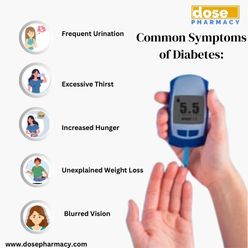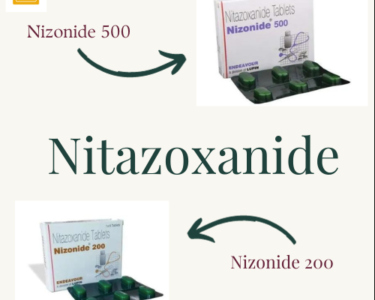The importance of predictive analytics in workforce management is rising continuously. That is why the market predicted that the growth of healthcare predictive analytics will touch $30 billion by 2028. Predictive analytics is used to determine hospitals’ staffing needs. It can also analyses past data to predict how many staff hospitals need.
So, hospitals can schedule staff with few staff on duty. Predictive analytics can spot workload patterns as well. This way, the chances of staff burnout get lower. So, here, we know how predictive analytics manages the workforce and its future in healthcare.
Importance and Benefits of Predictive Analytics in Hospital Workforce Management
Predictive analytics’ role in workforce management for hospitals matters a lot. It ensures that hospitals always have enough staff. Hospitals can also use this technology or tool to understand patients’ demands.
Healthcare organisations can avoid overstaffing. Predictive analytics can optimize staffing levels. Let’s understand its other benefits.
Optimises Staffing and Scheduling
Data analytics can predict patients’ admissions, discharges, and peak times to schedule staff. This ensures that healthcare organisations have enough staff for patients, lowers wait times, and satisfies more patients. Hospitals can manage staffing levels with patients’ demands, reducing overtime costs. Also, the healthcare organization can ensure that staff members can work on time.
Improved Patient Care
When you have the right staff at the right time, it leads to improved patient care. Predictive analytics ensures that all patients can get timely care. Also, hospitals can ensure that care comes from only competent staff. Predicting patients’ needs helps hospitals divide resources as well. It reduces unwanted complications and medical errors.
Cost Savings and Operational Efficiency
Predictive analytics in workforce management for hospitals can save costs. This happens as it optimizes staffing levels and lowers unnecessary expenses. Healthcare organisations can use important data for many purposes. For example, it reduces the chances of overstaffing or understaffing. Hospitals distribute their workload to their staff without overburdening anyone. So this leads to financial savings and improved operational efficiency. This can prepare hospitals to handle emergencies or critical areas of healthcare delivery.
Reduces Burnout and Staff Well-being
Using predictive analytics in workforce management means reduced burnout. It lowers workload fluctuation and maintains a balanced workforce. This way, hospitals can align staff with patients’ demands. So, it lowers healthcare organizations’ stress and fatigue. This way, it increases job satisfaction and staff well-being. So, satisfied staff is equal to improved staff retention rates. Through this, healthcare organisations can create a supportive work environment. It helps them deliver high-quality patient care.
Improves Training and Skill Development
Predictive analytics can spot gaps in training needs and staffing skills. They can identify gaps using historical data. This helps hospitals concentrate on staff training programs. It improves their skills to deliver better patient care. Also, the continuous training can meet the changing demands of patients. So, you can use data analytics to improve staff competencies. This way, you can maintain the highest standard of healthcare delivery. Also, you may know when you need to implement new medical technologies.
Helps Making Informed Decisions
Healthcare facilities can make better decisions using predictive analytics with healthcare workforce management software. Accurate data insights can offer valuable staffing information. Through that, you can come up with strategic planning for staffing. The data can help you use your resources in the right way. It is beneficial for both staff and patients. Also, you get the chance to use the predictive models. This can help you avoid any risks or errors when hiring staff.
Ensures Data Accuracy and Privacy
Predictive analytics focus on data privacy and accuracy. It ensures sensitive staff information stays safe. Hospitals can make sure that they also use those data responsibly. This way, the organisations can build trust among staff. Also, you can use the power of predictive analytics to show data integrity. This promotes accountability and transparency in decision-making.
The Future of Predictive Analytics in Workforce Management
Predictive analytics is set to transform healthcare workforce management. So, the future of this always looks very promising. The more technology comes up, it will work. Here are some of the future predictions for using data analytics in workforce management:
- In the future, the predictive analytics model will become more accurate and reliable. The computational power and improved algorithms will allow it to check a lot of data in less time.
- Real-time data analytics will help hospitals respond to staffing needs more quickly. This can help healthcare facilities cope with patients’ demands.
- In the future, AI will play a crucial role in data analytics for workforce management. It will automate the decision-making process. AI can better spot patterns that humans may overlook.
- Predictive analytics can predict specific healthcare staffing needs. It can check seasonal demand variants in staffing and workforce management. This capability ensures hospitals can find the right staff with the proper skills.
- Hospitals can tailor patient care by predicting their needs. This personalized approach increases patients’ satisfaction.
- Planning staffing levels with data analytics will improve the cost management process. Hospitals can also spot areas that can impact organizational goals.
Conclusion
Predictive analytics is not new in a healthcare setting. It has long held the promise of solving healthcare workforce problems. This can spot the high time to onboard staff in healthcare organizations. Also, the data makes sure more effective staff approaches. With data, healthcare administrators reduce staff burnout.
Reliable healthcare workforce management software improves results. Vemsta is a trustworthy VMS that offers automated staffing solutions.
FAQs
Why is predictive analytics important in workforce management?
Predictive analytics is crucial in hospital workforce management. It helps them spot healthcare staffing needs and ensures that healthcare facilities have the right staff. This convenience reduces costs and improves patient care.
How do hospitals use data analytics to attract healthcare staff?
Hospitals use data analytics to understand staff preferences. They can take advantage of this to know market trends and staffing levels. It helps them tailor staff hiring strategies. Hospitals can attract staff better through data analytics.
How does predictive analytics improve staffing efficiency in healthcare?
Predictive analytics can read past data to understand patients’ demands. So, it helps healthcare organizations schedule staff based on that data. This way, the organizations can optimize resource use and improve staffing efficiency.
What kind of data do hospitals use to manage the workforce better?
Hospitals use data on staffing patterns, patients’ admissions, and staff performance to ensure they can manage the workforce according to demand. This means valuable data can help hospitals make better staffing decisions.
How can predictive analytics help in reducing nurses’ burnout?
Predictive analytics can detect nurses’ workload patterns and stress points. This can help reduce nurses’ burnout. Hospitals start to adjust the schedules and workloads of the nurses after knowing the data. It brings work convenience to all nurses.







